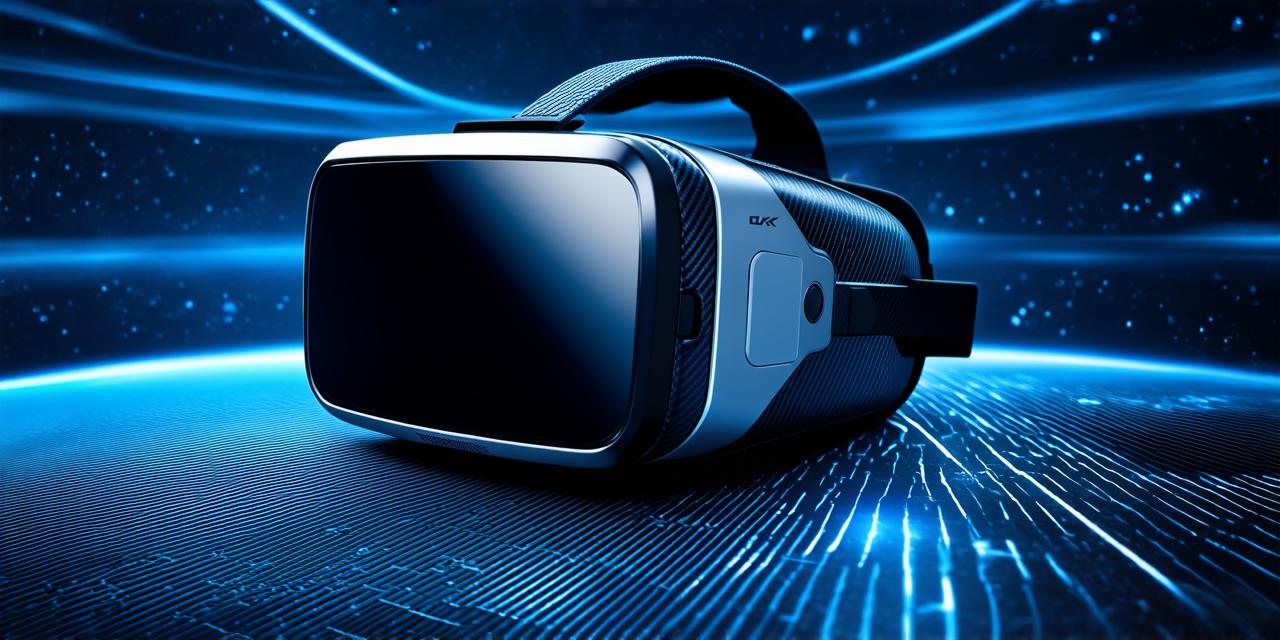Virtual reality (VR) technology has come a long way since its inception, and it is now widely used in various industries, including gaming, entertainment, education, healthcare, and more. One of the most important components of VR systems is the headset, which provides users with an immersive experience by tracking their movements and adjusting the environment accordingly.
What are Virtual Reality Headsets?
Virtual reality headsets are specialized devices that allow users to enter and interact with a computer-generated environment. They typically consist of a head-mounted display (HMD) or a headset that tracks the user’s movements using sensors, cameras, and other technologies. The HMD provides the user with an immersive experience by rendering high-quality graphics and audio in real-time based on the user’s movements and position.
Virtual reality headsets come in different forms, including standalone, mobile, and PC-powered devices. Standalone VR headsets like the Oculus Quest 2 are self-contained and do not require a separate computer or console to function. Mobile VR headsets, on the other hand, require a smartphone or tablet to provide additional processing power and functionality.
Finally, PC-powered VR headsets like the HTC Vive Pro require a high-performance computer with dedicated graphics cards to render the environment in real-time.
How do Virtual Reality Headsets Function?
Virtual reality headsets use various technologies to create an immersive experience for the user. The most important of these technologies are:
- Display technology: Virtual reality headsets use high-resolution displays to render images and graphics in real-time.
- Sensors and cameras: Virtual reality headsets use sensors and cameras to track the user’s movements and adjust the environment accordingly. These sensors include accelerometers, gyroscopes, and magnetometers, which measure the user’s head movements and provide input to the VR system.
- Processing power: Virtual reality headsets require a powerful computer or console to render the environment in real-time. These devices typically have dedicated graphics cards that can handle complex rendering tasks and provide a smooth and seamless experience for the user.
- Audio technology: Virtual reality headsets use high-quality audio technology to provide users with a fully immersive experience. Some VR headsets include built-in speakers, while others require separate audio devices to be connected to the system.
What Makes Virtual Reality Headsets Different from Traditional Headsets?
Virtual reality headsets are fundamentally different from traditional headsets in several ways:
- Interactivity: Virtual reality headsets provide an interactive experience for the user, allowing them to interact with a computer-generated environment. In contrast, traditional headsets are typically used for passive viewing and do not provide any interaction with the content.
- Immersive experience: Virtual reality headsets create a highly immersive experience for the user by tracking their movements and adjusting the environment accordingly. This provides users with a sense of presence and immersion that is not possible with traditional headsets.
- Customization: Virtual reality headsets can be customized to suit the user’s needs and preferences. For example, users can adjust the graphics quality, audio settings, and other parameters to create a personalized experience. This level of customization is not possible with traditional headsets.
- Portability: Virtual reality headsets are portable and do not require a separate computer or console to function. This makes them ideal for use on the go, allowing users to take their VR experience with them wherever they go. Traditional headsets, on the other hand, are typically used in a fixed location and require a separate device to be connected to.
How Virtual Reality Headsets Impact Human Behavior and Performance
Virtual reality headsets have been shown to have a positive impact on human behavior and performance in various industries. For example:
- Training and simulation: Virtual reality headsets are widely used for training and simulation purposes, allowing individuals to practice complex tasks in a safe and controlled environment.
- Therapy and rehabilitation: Virtual reality headsets have been used in therapy and rehabilitation settings to help patients overcome phobias, manage pain, and improve motor skills. For example, virtual reality exposure therapy has been shown to be effective in treating anxiety disorders like PTSD and social anxiety disorder.
- Education: Virtual reality headsets have the potential to revolutionize education by providing students with immersive learning experiences that engage and motivate them. By allowing students to explore complex concepts in a realistic and interactive environment, virtual reality can help improve understanding and retention of information.
- Gaming: Virtual reality headsets have already transformed the gaming industry, providing users with highly immersive and engaging experiences that blur the line between reality and fiction. This has led to increased user engagement and satisfaction, as well as new revenue streams for game developers.
FAQs
Virtual reality headsets have a wide range of applications in various industries, including training and simulation, therapy and rehabilitation, education, and more. They can also be used for marketing, product design, and other purposes that require an immersive experience.
Summary
Virtual reality headsets are a powerful tool that has the potential to transform the way we interact with technology and each other. By providing users with highly immersive and interactive experiences, virtual reality can help improve understanding, motivation, and engagement in various industries. As the technology continues to evolve, we can expect to see even more innovative uses for VR headsets in the future.
